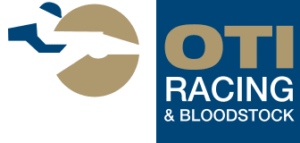A continuation from the TTR Welfare series on industry welfare initiatives.
[…]In October 2019, the ABC ran a story on its current affairs program 7:30 alleging mass cruelty to former racehorses in abattoirs. Unsurprisingly, ‘The final race’ sparked horror among the general public and industry participants alike. With the industry already subject to anti-racing backlash, serious intervention was required which included plans for national horse traceability reforms and revised state equine welfare strategies.
The industry is fortunate to count on forward-thinking individuals who prioritise aftercare for retired racehorses. Renowned syndication company OTI is at the forefront of this effort, ensuring horse welfare remains a top priority in its business.
In response to concerns raised by the 7:30 Report exposing the dark side of horse racing, OTI’s Chief Operating Officer Terry Henderson collaborated with passionate thoroughbred enthusiast Campbell Wansbrough to establish a sustainable equine welfare program within the business. Juggling his university studies and part-time work at OTI, Wansbrough manages the comprehensive program, guaranteeing ongoing support for every horse under the OTI racing team’s care for the duration of it’s life.
The OTI Equine Welfare Program operates on two fundamental pillars: the tracking register and the welfare fund.
The process is simple, as Wansborough explains: “Every horse that we sell, $2000 out of the revenue that we generate from the sales goes into a welfare fund. So effectively when owners are buying a share in a horse, a small portion of that sales revenue is going into this fund to then be utilised for our retired horses and can be accessed whenever we need for a range of different purposes for our retired horses,” said Wansbrough.
At the heart of the program’s success lies the efficient tracking register, which enables complete lifetime traceability of horses associated with OTI. New owners are required to provide updates every six months on the horse’s well-being and whereabouts, ensuring transparency and accountability.
“We send an agreement form to the new owner and they agree to give us updates every six months, on how the horse is going and should the horse be moved on elsewhere; they’re required to let us know and pass on those details,” explained Wansbrough.
“… they (the new owners) agree to give us updates every six months, on how the horse is going and should the horse be moved on elsewhere; they’re required to let us know…” – Campbell Wansbrough
Henderson emphasises the simplicity and effectiveness of OTI’s equine welfare program, advocating for a similar scheme to be implemented industry-wide.
“The thing that I couldn’t believe is how easy it is to operate. It’s focused on two things, the care of the horse and the tracking of the horse. And we seem to get carried away when we get into the bureaucracies within the industry of doing all sorts of other things.”
“The thing that I couldn’t believe is how easy it is to operate. It’s focused on two things, the care of the horse and the tracking of the horse.” – Terry Henderson
“I think that there is no reason in this modern day, why every horse that goes into a retirement program shouldn’t be tracked. And we can then track it properly and apply responsibility to whoever is responsible to do it.
“It’s very frustrating for a business like OTI to have large deductions now come out of stakes money and there to be zero reporting back as to how it’s spent.
“I think we’d all be far more supportive of the industry’s welfare programs, if we could see how that money was applied for the benefit of the horse and the benefit of the overall industry.”
The above is an excerpt of the TTR AUS NZ article by Caitlin Smith and can be read in full here.

